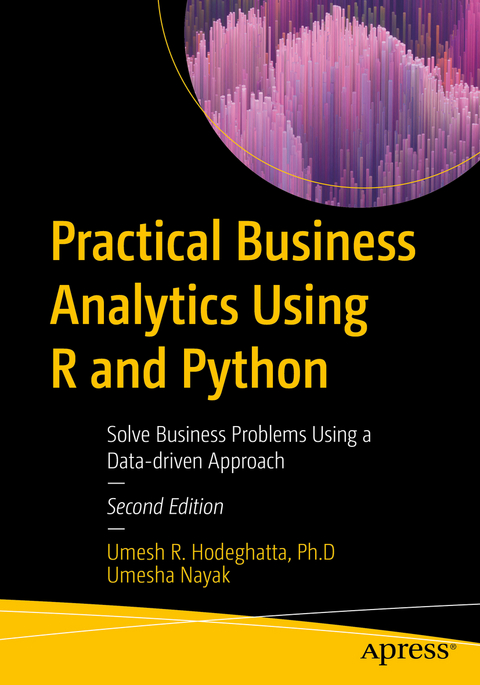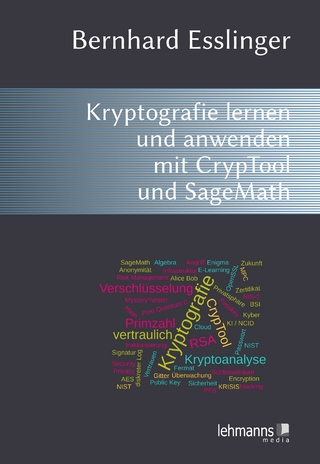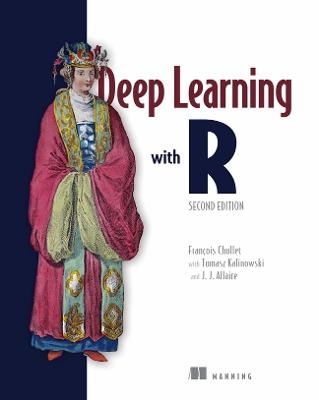
Practical Business Analytics Using R and Python
Apress (Verlag)
978-1-4842-8753-8 (ISBN)
Part one begins with an introduction to analytics, the foundations required to perform data analytics, and explains different analytics terms and concepts such as databases and SQL, basic statistics, probability theory, and data exploration. Part two introduces predictive models using statistical machine learning and discusses concepts like regression, classification, and neural networks. Part three covers two of the most popular unsupervised learning techniques, clustering and association mining, as well as text mining and natural language processing (NLP). The book concludes with an overview of big data analytics, R and Python essentials for analytics including libraries such as pandas and NumPy.
Upon completing this book, you will understand how to improve business outcomes by leveraging R and Python for data analytics.
What You Will Learn
Master the mathematical foundations required for business analytics
Understand various analytics models and data mining techniques such as regression, supervised machine learning algorithms for modeling, unsupervised modeling techniques, and how to choose the correct algorithm for analysis in any given task
Use R and Python to develop descriptive models, predictive models, and optimize models
Interpret and recommend actions based on analytical model outcomes
Who This Book Is For
Software professionals and developers, managers, and executives who want to understand and learn the fundamentals of analytics using R and Python.
Dr. Umesh Hodeghatta Rao is an engineer, a scientist, and an educator. He is currently a faculty member at Northeastern University, MA, USA, specializing in data analytics, AI, machine learning, deep learning, natural language processing (NLP), and cyber security. He has more than 25 years of work experience in technical and senior management positions at AT&T Bell Laboratories, Cisco Systems, McAfee, and Wipro. He was also a faculty member at Kent State University, Kent, Ohio, USA and Xavier Institute of Management, Bhubaneswar, India. He has his master’s degree in Electrical and Computer Engineering (ECE) from Oklahoma State University, USA and a Ph.D. from the Indian Institute of Technology (IIT), Kharagpur. His research interest is applying AI Machine Learning to strengthen an organization’s information security based on his expertise on Information Security and Machine Learning. As a Chief Data Scientist, he is helping business leaders to make informed decisions and recommendations linked to the organization's strategy and financial goals, reflecting an awareness of external dynamics based on a data-driven approach. He has published many journal articles in international journals and conference proceedings. In addition, he has authored books titled "Business Analytics Using R: A Practical Approach" and “The InfoSec Handbook: An Introduction to Information Security” published by Springer Apress, USA. Furthermore, Dr. Hodeghatta has contributed his services to many professional organizations and regulatory bodies. He was an Executive Committee member of IEEE Computer Society (India); Academic advisory member for the Information and Security Audit Association (ISACA), USA; IT advisor for the government of India; Technical Advisory Member of the International Neural Network Society (INNS) India; Advisory member of Task Force on Business Intelligence & Knowledge Management; He is listed in Who’s Who in the World in theyear 2012, 2013, 2014, 2015 and 2016. He is also a senior member of the IEEE, USA. Umesha Nayak is a director and principal consultant of MUSA Software Engineering Pvt. Ltd. which focuses on systems/process/management consulting. He has 33 years experience, of which 12 years are in providing consulting to IT / manufacturing and other organizations from across the globe. He is a Master of Science in Software Systems; Master of Arts in Economics; CAIIB; Certified Information Systems Auditor (CISA), and Certified Risk and Information Systems Control (CRISC) professional from ISACA, US; PGDFM; Certified Ethical Hacker from EC Council; Certified Lead Auditor for many of the standards; Certified Coach among others. He has worked extensively in banking, software development, product design and development, project management, program management, information technology audits, information application audits, quality assurance, coaching, product reliability, human resource management, and consultancy. He was Vice President and Corporate Executive Council member at Polaris Software Lab, Chennai prior to his current assignment. He has also held various roles like Head of Quality, Head of SEPG and Head of Strategic Practice Unit – Risks & Treasury at Polaris Software Lab. He started his journey with computers in 1981 with ICL mainframes and continued further with minis and PCs. He was one of the founding members of the information systems auditing in the banking industry in India. He has effectively guided many organizations through successful ISO 9001/ISO 27001/CMMI and other certifications and process/product improvements. He has co-authored the open access book The InfoSec Handbook: An Introduction to Information Security, published by Apress.
Section 1: Introduction to Analytics.- Chapter 1: Business Analytics Revolution.- Chapter 2: Foundations of Business Analytics.- Chapter 3: Structured Query Language (SQL) Analytics.- Chapter 4: Business Analytics Process.- Chapter 5: Exploratory Data Analysis (EDA).- Chapter 6: Evaluating Analytics Model Performance.- Section II: Supervised Learning and Predictive Analytics.- Chapter 7: Simple Linear Regressions.- Chapter 8: Multiple Linear Regressions.- Chapter 9: Classification.- Chapter 10: Neural Networks.- Chapter 11: Logistic Regression.- Section III: Time Series Models.- Chapter 12: Time Series – Forecasting.- Section IV: Unsupervised Model and Text Mining.- Chapter 13: Cluster Analysis.- Chapter 14: Relationship Data Mining.- Chapter 15: Mining Text and Text Analytics.- Chapter 16: Big Data and Big Data Analytics.- Section V: Business Analytics Tools.- Chapter 17: R programming for Analytics.- Chapter 18: Python Programming for Analytics.
| Erscheinungsdatum | 06.04.2023 |
|---|---|
| Zusatzinfo | 372 Illustrations, color; 180 Illustrations, black and white; XXV, 706 p. 552 illus., 372 illus. in color. |
| Verlagsort | Berkley |
| Sprache | englisch |
| Maße | 178 x 254 mm |
| Themenwelt | Mathematik / Informatik ► Informatik ► Datenbanken |
| Mathematik / Informatik ► Informatik ► Programmiersprachen / -werkzeuge | |
| Informatik ► Theorie / Studium ► Algorithmen | |
| Informatik ► Theorie / Studium ► Künstliche Intelligenz / Robotik | |
| Schlagworte | Business Analytics • Database • Data Mining • Datawarehouse • Descriptive Analytics • Evaluating Analytics • linear regression • Logistic Regression • Neural networks • predictive analytics • Python • R • SQL • Time Series Forecasting |
| ISBN-10 | 1-4842-8753-3 / 1484287533 |
| ISBN-13 | 978-1-4842-8753-8 / 9781484287538 |
| Zustand | Neuware |
| Informationen gemäß Produktsicherheitsverordnung (GPSR) | |
| Haben Sie eine Frage zum Produkt? |
aus dem Bereich


